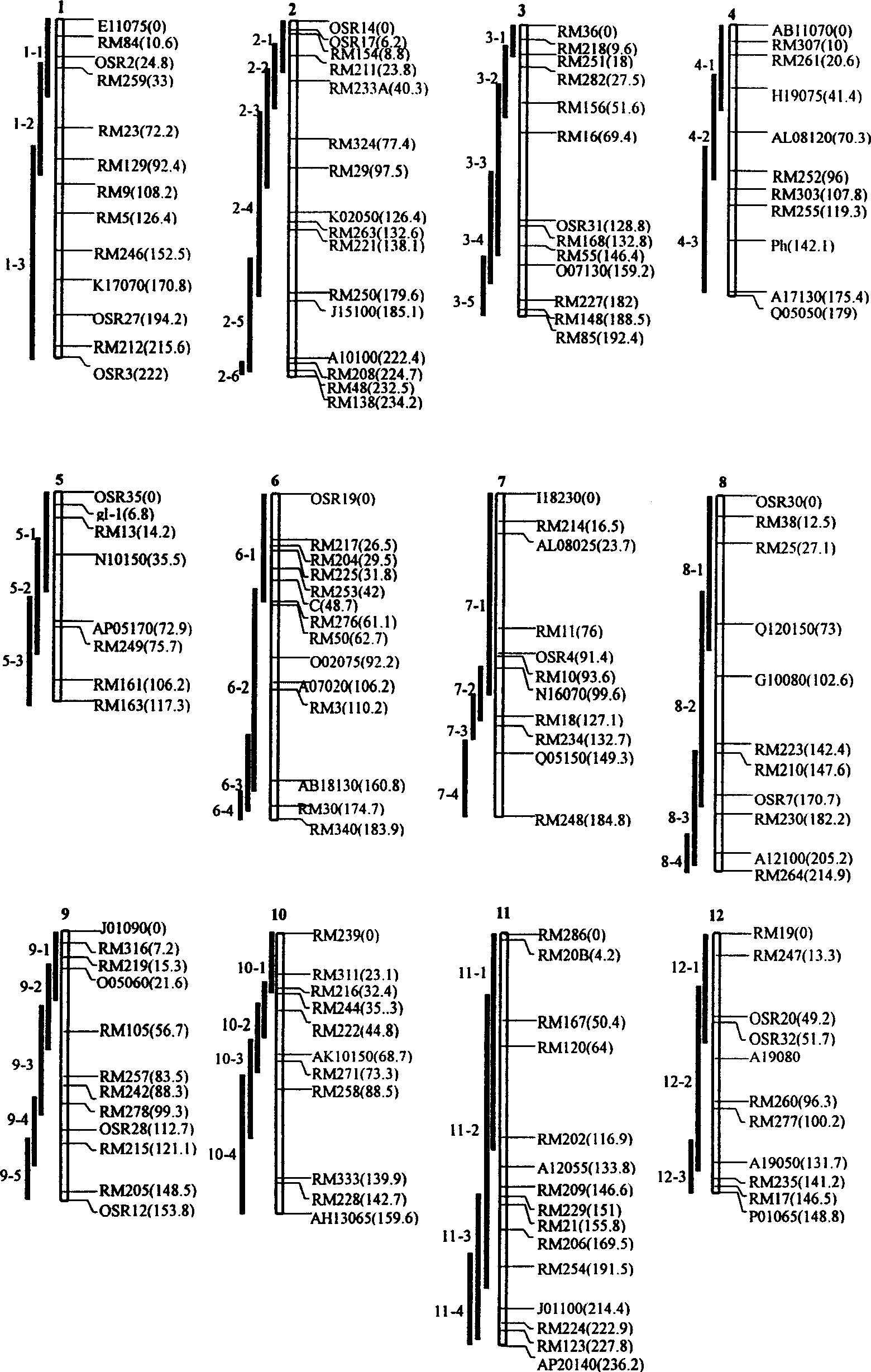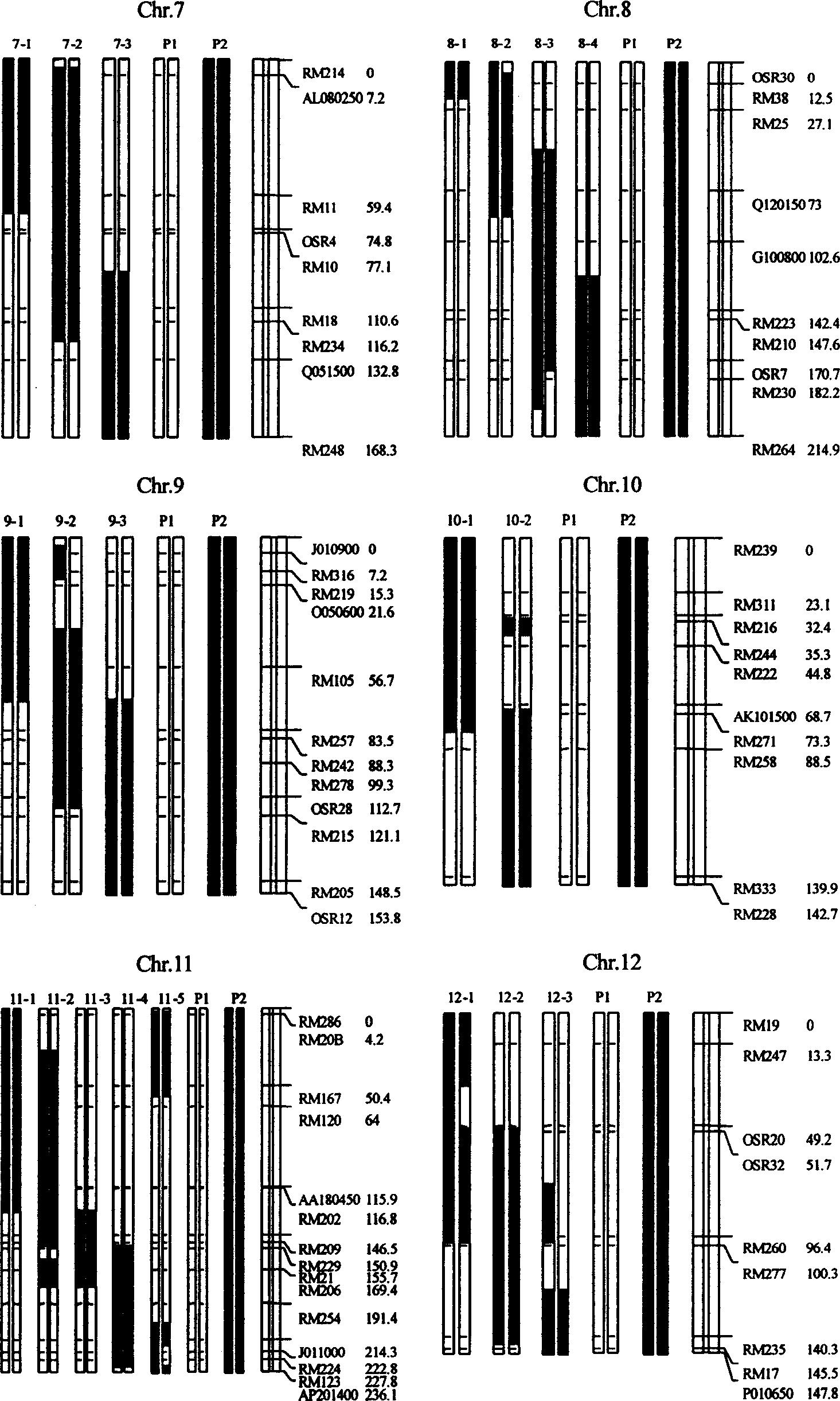Construction process of rice genetic test material
A technology for rice and japonica rice, which is applied in the field of biology and achieves the effects of fully separating main effects and interaction effects, uniform and consistent plant shape, and improving accuracy.
- Summary
- Abstract
- Description
- Claims
- Application Information
AI Technical Summary
Problems solved by technology
Method used
Image
Examples
Embodiment 1
[0021] Embodiment 1, a method for constructing rice genetic test materials in the present invention is to construct isogenic two-way introduction lines of indica rice background and japonica rice background, wherein: construction of two-way introduction lines: select the indica-type high-yield varieties Teqingheyuan originally produced in my country The high-quality japonica rice variety Lemont produced in the United States was used as the parent, and the F1 generation was obtained by cross-crossing using techniques well known to those skilled in the art; Teqing and Lemont were used as recurrent parents, respectively, through 3 backcrosses and more than 2 self-crosses. Results: More than 200 bidirectional introductory lines were obtained, the populations had extensive phenotypic variation, the introductory effect was obvious, and the introductory fragments covered the entire linkage map.
Embodiment 2
[0022] Embodiment 2, the detection of the phenotype of the indica rice background introduction line
[0023] The phenotypes of indica rice background introduction lines were identified by random block three-repetition experiment, and their growth period, plant height, leaf shape, tiller leaf angle, number of panicles, panicle length, number of branches, number of spikelets, grain density, and seed setting rate were identified. , 100-grain weight, and grain yield characteristics were observed and determined. The results showed that the indica rice introduced line population had extensive phenotypic variation, the introduction effect was obvious, and the plant morphology was relatively neat.
[0024] Genotype detection: 146 molecular markers and morphological markers were used to detect the genotypes of all strains, and a detailed analysis of the imported components of different strains and marker sites, such as figure 1 The structure diagram of the isogenic introduction line o...
Embodiment 3
[0025] Example 3, detection of phenotypes of japonica rice background introduction lines
[0026] The phenotypes of japonica rice background introduction lines were identified by random block three-repeat test, and their growth period, plant height, leaf shape, tiller leaf angle, number of panicles, panicle length, number of branches, number of spikelets, grain density, and seed setting rate , 100-grain weight, and grain yield characteristics were observed and determined. The results showed that the japonica rice introductory line population had extensive phenotypic variation, the introductory effect was obvious, and the plant morphology was relatively uniform. The genotypes of all strains were detected by 139 molecular markers and morphological markers, and detailed analysis of imported components was carried out on different strains and marker sites, such as figure 2 , image 3 , the structure diagram of the isogenic introduction line of the Lemont background, in which P1...
PUM
 Login to View More
Login to View More Abstract
Description
Claims
Application Information
 Login to View More
Login to View More - R&D Engineer
- R&D Manager
- IP Professional
- Industry Leading Data Capabilities
- Powerful AI technology
- Patent DNA Extraction
Browse by: Latest US Patents, China's latest patents, Technical Efficacy Thesaurus, Application Domain, Technology Topic, Popular Technical Reports.
© 2024 PatSnap. All rights reserved.Legal|Privacy policy|Modern Slavery Act Transparency Statement|Sitemap|About US| Contact US: help@patsnap.com










